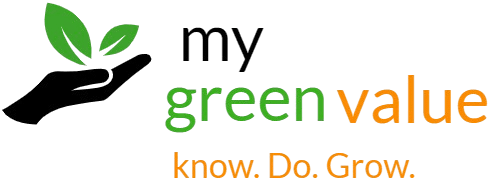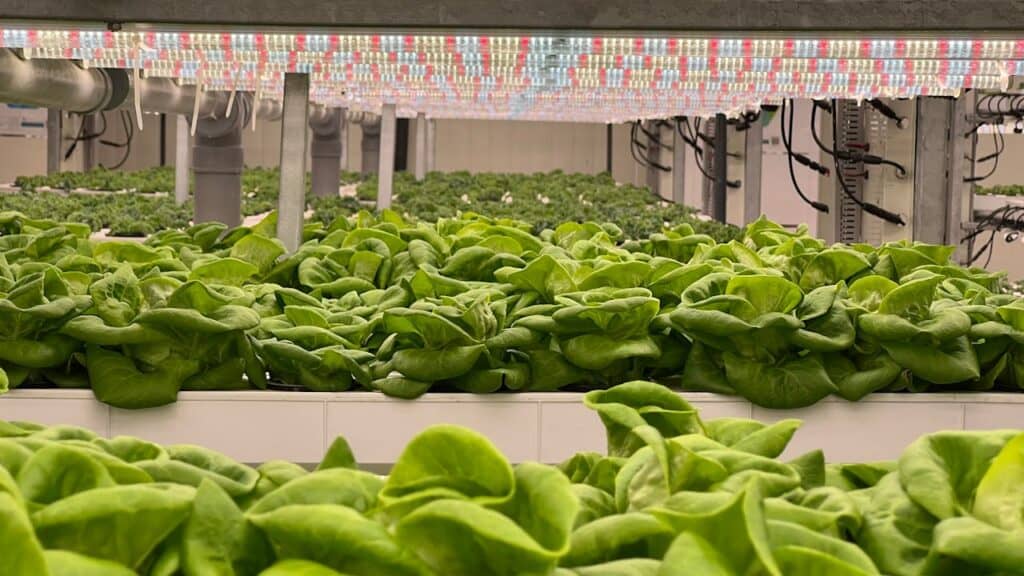As global populations continue to grow and urban areas expand, the demand for fresh, local, and sustainable food has never been greater. Traditional farming methods are often constrained by land availability, environmental concerns, and logistical challenges. However, modern urban farming technologies are revolutionizing agriculture by making it possible to cultivate food efficiently in city environments. These advancements not only enhance food security but also contribute to sustainability, economic growth, and improved urban living.
As urbanization accelerates and arable land becomes increasingly scarce, innovative agricultural solutions have emerged to sustain food production in cities. Modern urban farming technologies are reshaping how we grow food, making agriculture more efficient, sustainable, and accessible. From vertical farming and hydroponics to aquaponics and precision agriculture, these advancements are addressing challenges such as limited space, water scarcity, and food security.
This blog post explores the cutting-edge technologies driving modern urban farming, including vertical farming, hydroponics, aquaponics, aeroponics, smart greenhouses, and urban rooftop farming.
1. VERTICAL FARMING: MAXIMIZING SPACE UTILIZATION
Vertical farming is an innovative agricultural approach that involves growing crops in stacked layers, often within controlled environments such as warehouses or high-rise buildings. This method maximizes space efficiency, making it ideal for urban settings where land is limited.
Key Technologies in Vertical Farming
1. LED Lighting – Artificial lighting mimics natural sunlight, providing plants with the necessary spectrum for photosynthesis.
2. Automated Climate Control – Sensors and AI driven systems regulate temperature, humidity, and CO2 levels to optimize growth conditions.
3. Hydroponics and Aeroponics – Instead of soil, plants receive nutrients through water based (hydroponics) or mist based (aeroponics) delivery systems.
4. AI and Data Analytics – Machine learning algorithms analyze data to predict and enhance crop yields while reducing waste.
Benefits of Vertical Farming
- Maximized crop production in limited urban spaces
- Reduced water usage (up to 90% less than traditional farming)
- Minimal pesticide and herbicide use
- Year-round food production independent of weather conditions
Challenges of vertical farming
- High Initial Costs: Setting up vertical farms requires significant investment in infrastructure and technology.
- Energy Consumption: LED lighting and climate control systems can result in high energy costs.
2. HYDROPONICS: SOIL FREE CULTIVATION
Hydroponics is a soilless farming method where plants grow in nutrient rich water solutions. This technology allows crops to grow faster and yield higher compared to traditional soil farming.
1. Nutrient Film Technique (NFT) – A thin film of nutrient solution flows over plant roots, providing continuous hydration and nourishment.
2. Deep Water Culture (DWC) – Plants are suspended in water, with roots directly submerged in a nutrient rich solution.
3. Ebb and Flow (Flood and Drain) – Plants are periodically flooded with nutrient rich water, which then drains away, providing oxygen to the roots.
Benefits of Hydroponics
- Faster growth rates and higher yields
- Minimal water usage compared to soil farming
- Reduced dependency on fertilizers and pesticides
- Suitable for indoor and urban environments
Challenges of hydroponics
- Technical Expertise Required: Managing nutrient balance and pH levels requires knowledge and monitoring.
- Vulnerability to System Failures: Any disruption in water or nutrient delivery can quickly impact plant health.
- Hydroponics is widely used in urban farming due to its efficiency and adaptability, making it a promising solution for future food security.
3. AQUAPONICS: THE SYMBIOTIC FARMING SYSTEM
Aquaponics combines hydroponics with aquaculture (fish farming) to create a self-sustaining ecosystem. Fish waste provides essential nutrients for plants, while the plants naturally filter and clean the water for the fish.
Components of an Aquaponics system
1. Fish Tanks – Contain fish such as tilapia, catfish, or trout that produce nutrient rich waste.
2. Biofilters – Convert fish waste into nitrates that serve as natural fertilizers for plants.
3. Hydroponic Grow Beds – Where plants absorb nutrients and purify the water before it returns to the fish tanks.
Benefits of Aquaponics
- Efficient water recycling system
- Chemical free and organic food production
- Dual food sources (fish and vegetables)
- Sustainable and ecofriendly approach
Challenges of aquaponics
- Complexity: Balancing fish and plant needs requires careful monitoring.
- Initial Investment: Setting up an aquaponics system can be costly.
- Despite these challenges, aquaponics offers an excellent opportunity for sustainable urban agriculture.
4. AEROPONICS: GROWING PLANTS IN THE AIR
Aeroponics is a high-tech farming method where plant roots are suspended in the air and misted with nutrient rich water. This system promotes faster growth while using minimal water and resources.
Advantages of Aeroponics
- Uses 95% less water than traditional soil farming
- Faster plant growth due to increased oxygen exposure
- Requires no soil, reducing the risk of soilborne diseases
- Ideal for urban farming setups with limited space
Challenges of Aeroponics
- High Dependence on Technology: Requires precise control of misting cycles and nutrient composition.
- Power Dependency: A power outage can severely affect plant health.
- Aeroponics is gaining popularity in urban agriculture, particularly in vertical farming and indoor gardening.
5. SMART GREENHOUSES: AI AND IOT DRIVEN FARMING
Smart greenhouses utilize Internet of Things (IoT) technology, artificial intelligence (AI), and automation to optimize plant growth. These structures maintain ideal conditions for crops by automatically adjusting lighting, temperature, humidity, and irrigation.
Technologies in Smart Greenhouses
1. IoT Sensors – Measure temperature, humidity, soil moisture, and light levels to provide real time data.
2. Automated Irrigation Systems – Deliver water and nutrients precisely when needed.
3. AI and Machine Learning – Analyze environmental conditions and adjust settings for optimal growth.
4. Solar Panels and Renewable Energy – Reduce carbon footprint and make greenhouses more energy efficient.
Benefits of Smart Greenhouses
- Increased crop yields with precise resource management
- Reduced water and energy consumption
- Protection from extreme weather and pests
- Year round farming regardless of climate conditions
Challenges of smart green houses
- High startup costs
- Requires tech know how
6. URBAN ROOFTOP FARMING: UTILIZING AVAILABLE SPACES
Rooftop farming transforms underutilized urban rooftops into productive agricultural spaces. This practice can involve hydroponics, container gardening, or soil-based farming, providing fresh produce to local communities.
Advantages of Rooftop Farming
- Maximizes unused urban spaces for food production
- Reduces heat island effects by cooling city buildings
- Provides fresh, locally grown food with lower transportation costs
- Enhances biodiversity and urban sustainability
Challenges of rooftop farming
- Pests and diseases
- Poor management
7. SMART FARMING AND PRECISION AGRICULTURE
The integration of Artificial Intelligence (AI), Internet of Things (IoT), and Big Data is transforming urban farming through smart farming techniques.
Key Technologies
IoT Sensors: Monitor soil moisture, humidity, temperature, and nutrient levels in real time.
AI Powered Crop Management: Uses machine learning to predict plant diseases and optimize growth conditions.
Automated Farming Systems: Robots and drones assist with planting, harvesting, and monitoring.
Benefits of Smart Farming
Resource Optimization: Reduces waste by precisely controlling water, nutrients, and energy use.
Enhanced Crop Yields: AI driven analysis improves planting schedules and pest control.
Remote Monitoring: Farmers can track and manage crops using smartphone apps.
Challenges of smart farming
- High Implementation Costs: Advanced technology requires significant investment.
- Data Security Concerns: Digital farming relies on cloud-based storage, which can be vulnerable to cyber threats.
- Despite these challenges, smart farming is making urban agriculture more efficient and productive.
CHALLENGES AND FUTURE PROSPECTS OF URBAN FARMING
- Despite its many advantages, urban farming technologies face several challenges:
- High initial costs for setup and infrastructure
- Technical knowledge requirements for operating advanced systems
- Regulatory and zoning restrictions in certain cities
- Energy consumption in controlled environment agriculture
The Future of Urban Farming
The future of urban farming looks promising, with continuous advancements in AI, robotics, and sustainable energy solutions. The integration of blockchain for transparent food supply chains and gene editing technologies for improved crop resilience may further enhance urban agriculture. As more governments and private organizations invest in urban farming, cities will become more self-sufficient in food production, promoting sustainability and resilience.
Conclusion
Modern urban farming technologies are revolutionizing agriculture by making it possible to grow food in limited spaces while reducing environmental impact. Vertical farming, hydroponics, aquaponics, aeroponics, smart greenhouses, and rooftop farming are all playing crucial roles in this transformation. While challenges exist, ongoing innovations and increasing global interest in sustainable food systems are paving the way for a future where fresh, healthy food is accessible to urban populations worldwide.
As urban areas continue to expand, embracing these advanced farming techniques will be essential to meeting global food demands while preserving the environment for future generations.

